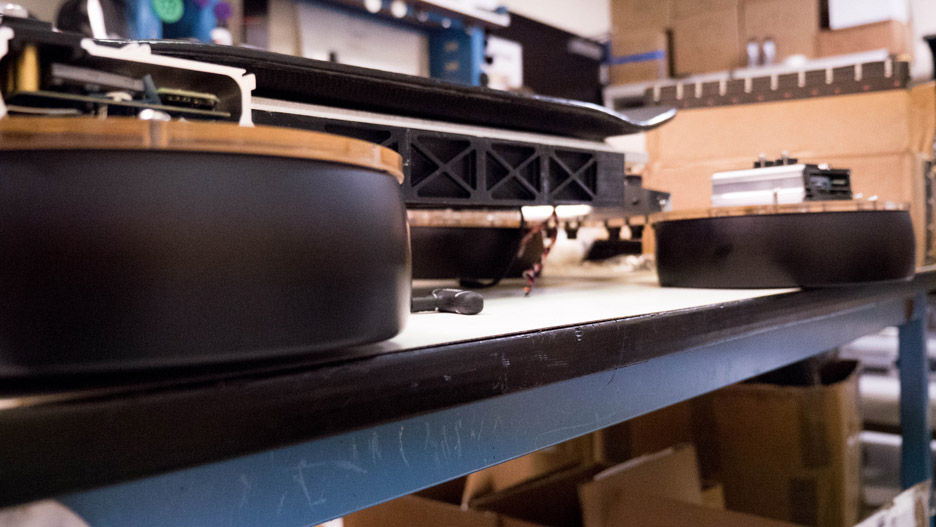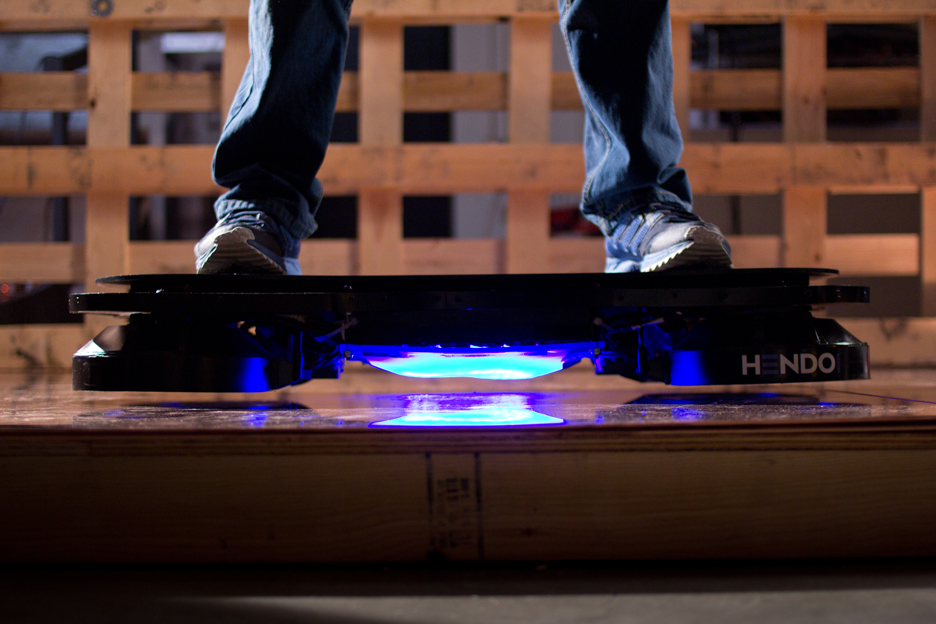Arx Pax unveils updated Hendo hoverboard on Back to the Future day
Tech company Arx Pax has worked with pro skateboarder Tony Hawk to create a slimmed-down design for its second Hendo hoverboard, released today to mark the exact date travelled to in 1980s sci-fi film Back to the Future II.
Arx Pax said that the new model is "quieter", "sleeker", and "more energy-efficient" than the original Hendo prototype, which received over $500,000 worth of funding on crowdfunding platform Kickstarter in 2014.

Hoverboards provide personal transportation in the second Back to the Future movie, when protagonist Marty McFly travels to 21 October 2015, and their development and release over the past couple of years has partially been spurred on with this date in mind.
Hendo's functioning design relies on magnetic field architecture (MFA) – invented by Arx Pax and originally proposed by the company's CEO and co-founder, architect Greg Henderson, as an emergency method for lifting buildings above the ground during floods or earthquakes.
Electromagnets on the base of the board create changing magnetic fields that generate an electric current across metallic surfaces, such as the copper-covered skate ramp shown in Hendo's demonstration video. The surface in turn produces a magnetic field that repels the board, and causes it to hover.
The Hendo 2 has been designed to more closely resemble a traditional skateboard, and the Arx Pax design team worked with professional skateboarder Tony Hawk to improve its appearance – which included creating a thinner board.

"Getting Tony's feedback made a huge difference in our design approach," said Henderson, who co-founded the company with his wife Jill. "After some long discussions, we all agreed that the hoverboard should be as intuitive as possible, so we used a traditional deck as the user interface."
The team apparently also modified trucks – metal axles from skateboards – to be used in the Hendo 2, aiming to give riders improved control and a more intuitive understanding of how to move. Other additions include longer battery life, and a switch that allows users to remotely turn off the board.
Arx Pax even issued an invite to Back to the Future screenwriter and producer Bob Gale, who came up with the original concept for the films, to trial the board.
"It was a total high riding the Hendo because it embodied what we were trying to create in 1989," said Gill. "The Hendersons' movie-inspired technology has led to not only a functional hoverboard, but also other fascinating hover applications."
The movie above shows a demonstration of the original Hendo hoverboard
Jill Henderson added: "Our second-generation hover engines, which power Hendo 2, are stronger, more efficient, and open up new possibilities for the way we transport objects and people. We've all heard of wearables; it's time to start thinking about moveables."
Aside from dedicated Back to the Future fans, both SpaceX and NASA have expressed interest in Arx Pax's MFA technology. SpaceX added it to the draft specifications for its Hyperloop Pod competition, and NASA has partnered with the company to explore possibilities for using it to move small satellites.
Back to the Future II also featured self-lacing trainers by Nike, which the sports brand hinted that it might launch in 2015 earlier this year.